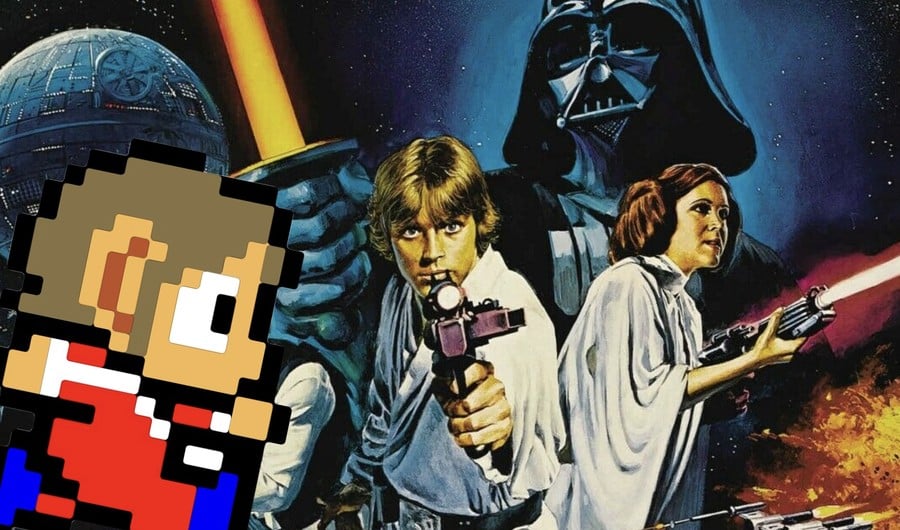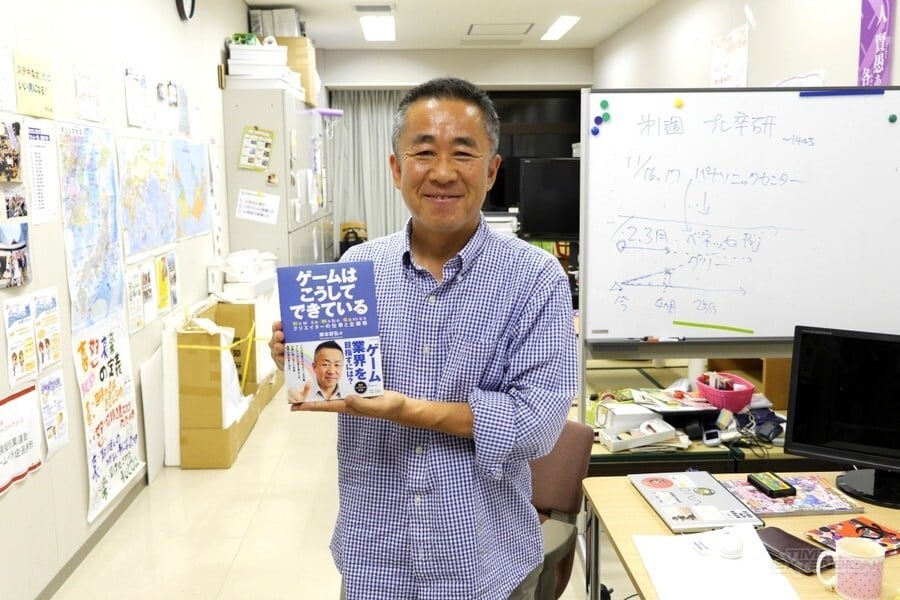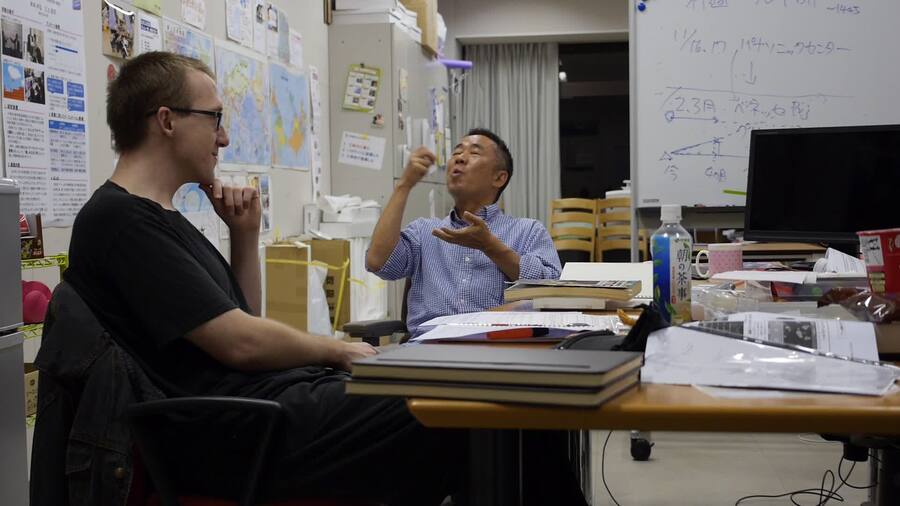
Editor's note: We're republishing this piece In honour of Star Wars day – may the Force be with you!
You're probably aware of the insane version of Star Wars developed by Namco, exclusive to the Japanese Famicom, released in December 1987. It's the one where Darth Vader turns into a scorpion, pterodactyl, shark, and wampa. Yeah, that one.
The Namco team behind it was small, comprising a core staff of Shinichirou Okamoto as designer (credited as Wan Wan); Yoshihiro Kishimoto as programmer (he made Pac-Land); plus an unknown artist, Shimada, and then Hiroyuki Kawada on music. Four young guys tasked with turning one of the century's biggest and most influential films into a game for Japan's leading console. No pressure, lads.
The game deviated heavily from the film's story, and the resulting cognitive dissonance has been the basis for countless parodies, articles, and YouTube videos – but mostly people just asking, "Why?!"
In the decades following its release, no journalist had ever thought to ask anyone involved until a three-hour interview with Yoshihiro Kishimoto for The Untold History of Japanese Game Developers revealed all. By this point, he had become Professor Kishimoto, teaching games design and history to students at Hachioji Campus, in Tokyo.

"It was kind of a strange era, I must say," laughs Pr Kishimoto when we bring up his odd game. "If someone were to ask me today to be the programmer for a Star Wars game, I'd be thrilled. <look of intense surprise - WHOA!!> But at that time, everyone said it looked like a lot of work, so they weren't too keen to work on the project. It was just cumbersome! <laughs> Because it didn't give the freedom to make everything you wanted. With the Famicom, we were still unable to produce 3D, so it was just impossible to express Star Wars on it. At the start, there's the Star Destroyer flying overhead; those who watched the movie were very impressed with that scene, but you can't replicate that on the Famicom. Another is the end of the movie, the X-Wing flies through the narrow passageway to destroy the Death Star, but you cannot replicate this because the Famicom doesn't do proper 3D."
As it turns out, Japan would receive two entirely different 8-bit takes on the first Star Wars film. Most American and European residents would have played the 1991 game (credited variously to Lucasfilm Games and Beam Software), released on NES, Game Boy, Master System, and Game Gear. However, Pr Kishimoto was completely unaware of this later version, which also made its way to Japan and the Famicom courtesy of Victor. See the two Japanese boxes side-by-side below.
We covered a lot of topics chatting with Pr Kishimoto over those three hours, but it's his Star Wars game where you really sense any regret. He was the rockstar programmer who created successes with Pac-Land and the Famista series of baseball games but, hamstrung by hardware incapable of true 3D, there's almost a feeling of despair in his recollections of Star Wars.
"We couldn't think of any other way to make some kind of game out of it," laments Pr Kishimoto when justifying their emphasis on 2D gameplay. "The planner was Shinichiro Okamoto, and prior to this, he made a 3D space combat simulation for the Famicom called Star Luster. It was 3D, or rather a simulated 3D. So in hindsight, we should have made Star Wars more like this."
The thing is, we like Okamoto and Kishimoto's 2D reinterpretation of the film. Admittedly it is very difficult, with one-hit deaths, not enough lives, and the Death Star trench-run has an unfair time limit. But the level layouts, quirky bosses, interactive environments, abundance of cut-scenes, and varied selection of Force Powers, all come together to make a novel little game. If you use cheats for infinite lives, it's actually quite fun. As for the Vader transformations, they may not be canonical, but they are kind of cool – and The Empire Strikes Back did have that mystical Cave of Evil. What we're saying is, Star Wars is no stranger to space magic!
Like any good interviewer, we take our time describing the game's high points, reassuring Pr Kishimoto of our sincerity in the hope of coaxing out memories long suppressed. It works, because he goes on to explain how they actually based the game on a famous Sega mascot platformer...
"When I was first told to work on Star Wars as programmer, my reaction was, 'What am I going to do? How can that be done?' Because it was just not possible," begins Pr Kishimoto. "Okamoto was the planner, and three years my senior, but I remember thinking I was at a loss. There was nothing else that could be done, so we came up with this idea of Darth Vader turning into a scorpion. Looking back, it's a mystery why the licensor allowed us to get away with that! <laughs> That was when Sega had their console game Alex Kidd, which was the influence. Just like with Alex Kidd, the screen would scroll to the right, and all kinds of enemies would appear, and at the very end, the boss would appear. I discussed it with Okamoto, and we felt our only option was to make Luke the main character and do it that way."
As Pr Kishimoto reveals, there's actually a huge amount of similarity between Alex Kid and Star Wars! We've provided a selection of screenshots which compare notable moments. This interview didn't go unnoticed either, since an obscure French blog picked up on it and made not just comparison images, but side-by-side animated GIFs showing how nearly identical the two games are. These are incredible to behold. Also, as we reported previously, Alex Kidd was originally meant to be a Dragon Ball game before the license fell through.
"It's strange to think about how little awareness there was for such a popular franchise," says Pr Kishimoto, when we ask if he has any other anecdotes. "Those were the days when even if a game did not have a popular license, it would still sell, so long as it was entertaining. Just because you released a Star Wars game didn't mean it would sell better than an original game. And there was no checking mechanism at all. Nowadays, the licensor always checks to see if the graphics look similar and make sure the content is appropriate [and] in line with the existing IP. But at that time, there were no checks at all. We weren't given any sort of materials or data to work off of, either."
So you have four young developers, underpowered hardware, no resources to work off, the biggest film the world had seen up to that point, and astronomical expectations from the fans. We should cut them some slack, surely? At the very least, the game turned out weirdly interesting. Even if it was a clone of Alex Kidd.

What's even more interesting is that Dragon Ball itself was hugely inspired by Star Wars. A brief Google search brings up countless results, web articles, online discussions, and more. Which is unsurprising, given that Star Wars influenced just about everything. But this also means the Famicom version of Star Wars, which was based on Alex Kidd, which was meant to be Dragon Ball, which itself borrowed from Star Wars, now encapsulates a perfect example of ouroboros.
It also means that Wampa Vader is canon, because that's just how science works.

